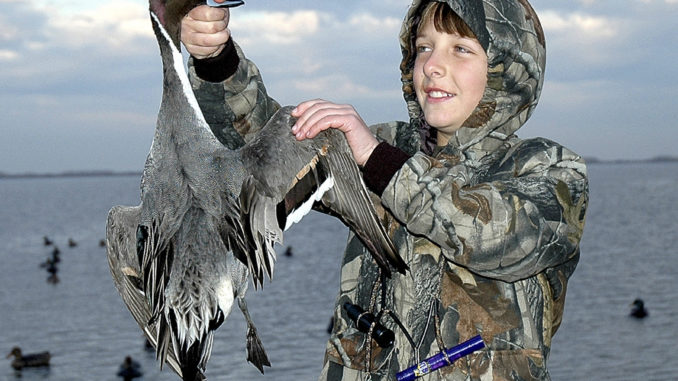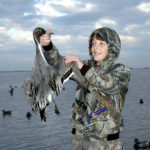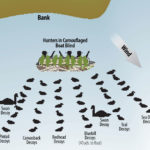
For many hunters trying to lure ducks into range on ponds, in swamps or around other small bodies of water, “less is more” when it comes to decoys.
On open water, it’s just the opposite.
Guide Carlton Thornton usually has at least six-dozen blocks in his basic decoy spread, because on big water, it takes a pretty big crowd on the surface to attract ducks that are passing by in the air.
Thornton has his decoys connected on long lines of heavy monofilament by snap swivels, with each line containing only decoys of one species. Each string will contain between six and 12 decoys, and he may put out as many as a dozen strings – six on either side of the boat, if conditions are favorable.
“You want to spread ‘em out, like a big wheel,” he said. “I like to throw different stuff at ‘e. I might put out a line of bluebills, a line of redheads, a line of teal, pintails and sea ducks. I’ll put out one or two swan decoys in a spread because they can see those big decoys a long ways off.
“You want to keep the sea ducks apart, because sea ducks act like they don’t like other ducks. When a sea duck stools, he stools to other sea ducks.
“A lot of times, I’ll put sea ducks on one side of the boat and puddlers or divers on the other side. That can make for some crazying turning around in the boat and shooting, but it’s worth it sometimes.”






Be the first to comment